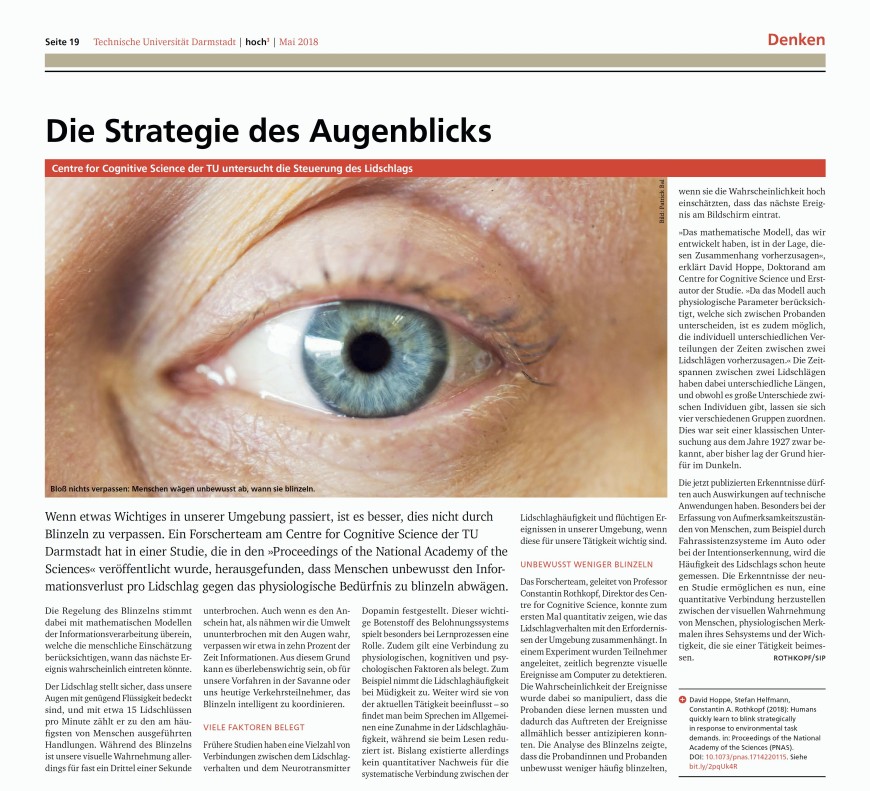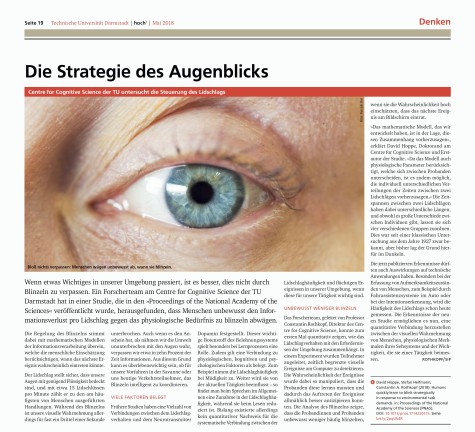Humans learn to blink strategically
2018/05/15
Eye blinks serve the purpose of maintaining healthy vision but during a blink visual information processing is interrupted. While a multitude of medical, cognitive, and psychological factors have been shown to influence blinking, the present study establishes quantitatively how human blinking behavior is dynamically adapted to environmental task demands. In our experiment participants quickly learned to blink strategically. A minimal computational model captures the observed behavior as a trade-off between internal, physiological benefits and external, task-related costs given perceptual uncertainties. Crucially, the model allows predicting an individual subject’s temporal dynamics of blinking and provides an explanation of the long-known distribution of interblink intervals. Taken together, this provides a basis for future research using blinking as a behavioral marker.
David Hoppe, Stefan Helfmann, Constantin A. Rothkopf (2018): Humans quickly learn to blink strategically in response to environmental task demands. in: Proceedings of the National Academy of the Sciences (PNAS). DOI: 10.1073/pnas.1714220115. Siehe bit.ly/2pqUk4R
Read the German summary in hoch3 / May 2018, page 19.
The complete hoch3 edition you can find here.




